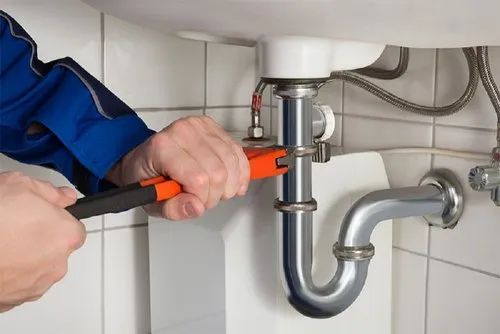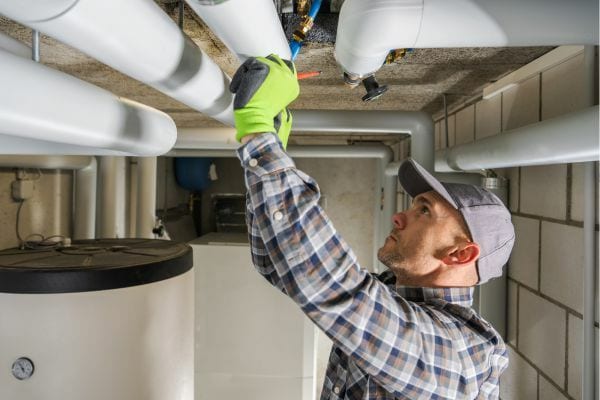When it comes to avoiding pipe freezing in new construction, understanding the risks and implementing the right strategies is crucial. Freezing pipes can lead to significant damage, costly repairs, and delays in construction. Whether you’re a homeowner or a real estate developer, taking proactive measures is essential to protect your investment and ensure a successful project. In this article, we will explore the various methods and tips to prevent pipes from freezing in new construction settings.

Understanding the Risks of Pipe Freezing
In cold climates, pipe freezing is a common issue that can have serious consequences. When water inside pipes freezes, it expands, causing the pipes to burst or crack. This can lead to water leaks, flooding, and extensive damage to the property. In new construction projects, where the building might not yet be fully insulated, the risk of pipe freezing is even higher. Plumbing installation tips can help you understand and mitigate these risks effectively.
Factors Contributing to Pipe Freezing in New Construction
Several factors can increase the likelihood of pipes freezing in new construction. Some of these include:
- Inadequate insulation
- Improper pipe placement
- Extreme cold weather conditions
- Inconsistent heating within the structure
Strategies for Preventing Pipe Freezing
To prevent pipe freezing in new construction, it is essential to implement effective strategies from the beginning. Here are some key methods to consider:
Proper Insulation
Insulating pipes is one of the most effective ways to prevent them from freezing. Use high-quality insulation materials designed to withstand cold temperatures. Ensure that all exposed pipes, especially those in unheated areas, are adequately insulated.
Strategic Pipe Placement
During the planning phase of your construction project, consider the placement of pipes carefully. Position them away from exterior walls, and cold spots, and ensure they are within the building’s thermal envelope. This reduces their exposure to freezing temperatures.
Maintaining Consistent Heat
Keeping the building at a consistent temperature is crucial. Even in areas that are not yet fully constructed, maintain some level of heating to prevent pipes from freezing. Temporary heating solutions can be used during colder months to provide necessary warmth.
Regular Monitoring and Maintenance
Regularly check pipes for any signs of freezing or damage. Early detection allows for prompt action, minimizing potential damage. This is particularly important in new constructions where systems are still being fine-tuned.
The Role of Technology in Preventing Pipe Freezing
Advancements in technology have introduced innovative solutions for avoiding pipe freezing. Smart thermostats and temperature sensors can be integrated into the building’s system to monitor and regulate temperatures effectively. These technologies provide real-time data and alerts, allowing for quick intervention when needed.
Smart Thermostats
Smart thermostats allow remote control of heating systems, ensuring that temperatures are maintained even when the building is unoccupied. This is particularly useful in new constructions where occupancy might not be immediate.
Temperature Sensors
Install temperature sensors near vulnerable pipes to monitor fluctuations in temperature. These sensors can alert you to potential freezing conditions, enabling you to take preventive measures before any damage occurs.
Building Practices to Minimize Pipe Freezing
Incorporating specific building practices during construction can significantly reduce the risk of pipe freezing:
Sealing Gaps and Cracks
Ensure that all gaps and cracks in the building envelope are properly sealed. This prevents cold air from entering and affecting the temperature around pipes.
Using Advanced Construction Materials
Utilize advanced construction materials that offer better thermal resistance. These materials help maintain a stable internal temperature, reducing the likelihood of pipe freezing.
Case Studies: Successful Pipe Freezing Prevention
Looking at real-world examples can provide valuable insights into effective strategies for avoiding pipe freezing in new construction. Here are a few case studies:
Case Study 1: Residential Development
A residential development in a cold climate implemented a comprehensive insulation strategy and used smart thermostats to monitor temperatures. As a result, they successfully prevented pipe freezing throughout the construction phase.
Case Study 2: Commercial Building
A commercial building project utilized advanced temperature sensors and temporary heating solutions. By maintaining consistent temperatures, they avoided any pipe-related issues during the winter months.
Conclusion
By understanding the risks and implementing the right strategies, you can effectively prevent pipe freezing in new construction projects. From proper insulation and strategic pipe placement to leveraging technology and incorporating best building practices, there are numerous ways to safeguard your investment. Whether you’re a homeowner or a real estate developer, staying informed and proactive will ensure the success and longevity of your construction endeavors.

Frequently Asked Questions
What is the main cause of pipe freezing in new construction?
The main cause of pipe freezing in new construction is inadequate insulation and exposure to cold temperatures without proper heating solutions.
How can technology help prevent pipe freezing?
Technology like smart thermostats and temperature sensors can monitor and regulate temperatures, providing real-time data to prevent pipes from freezing.
Why is pipe placement important in new construction?
Strategic pipe placement helps minimize exposure to cold areas, reducing the risk of freezing and related damage.
This article contains affiliate links. We may earn a commission at no extra cost to you.




